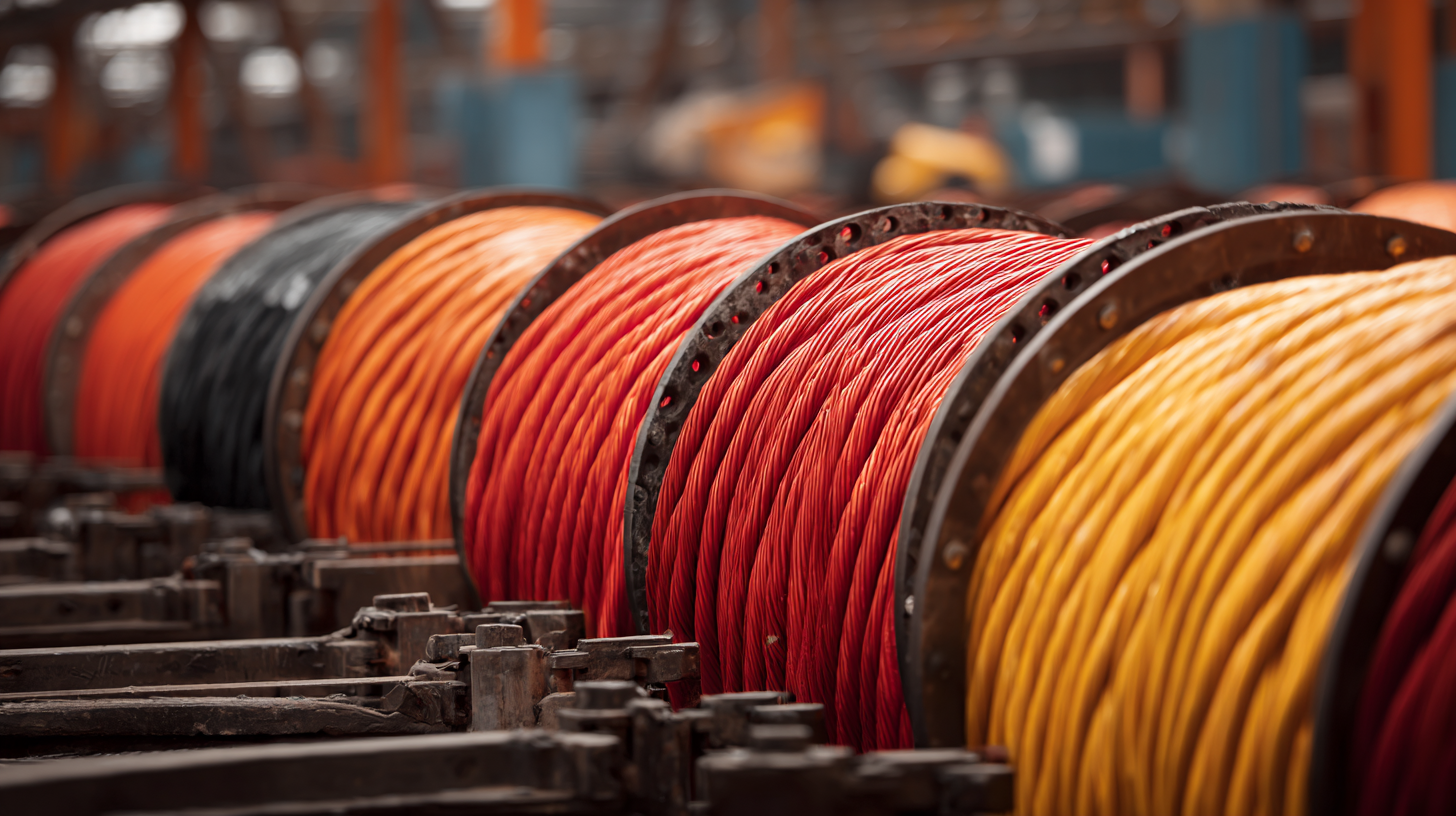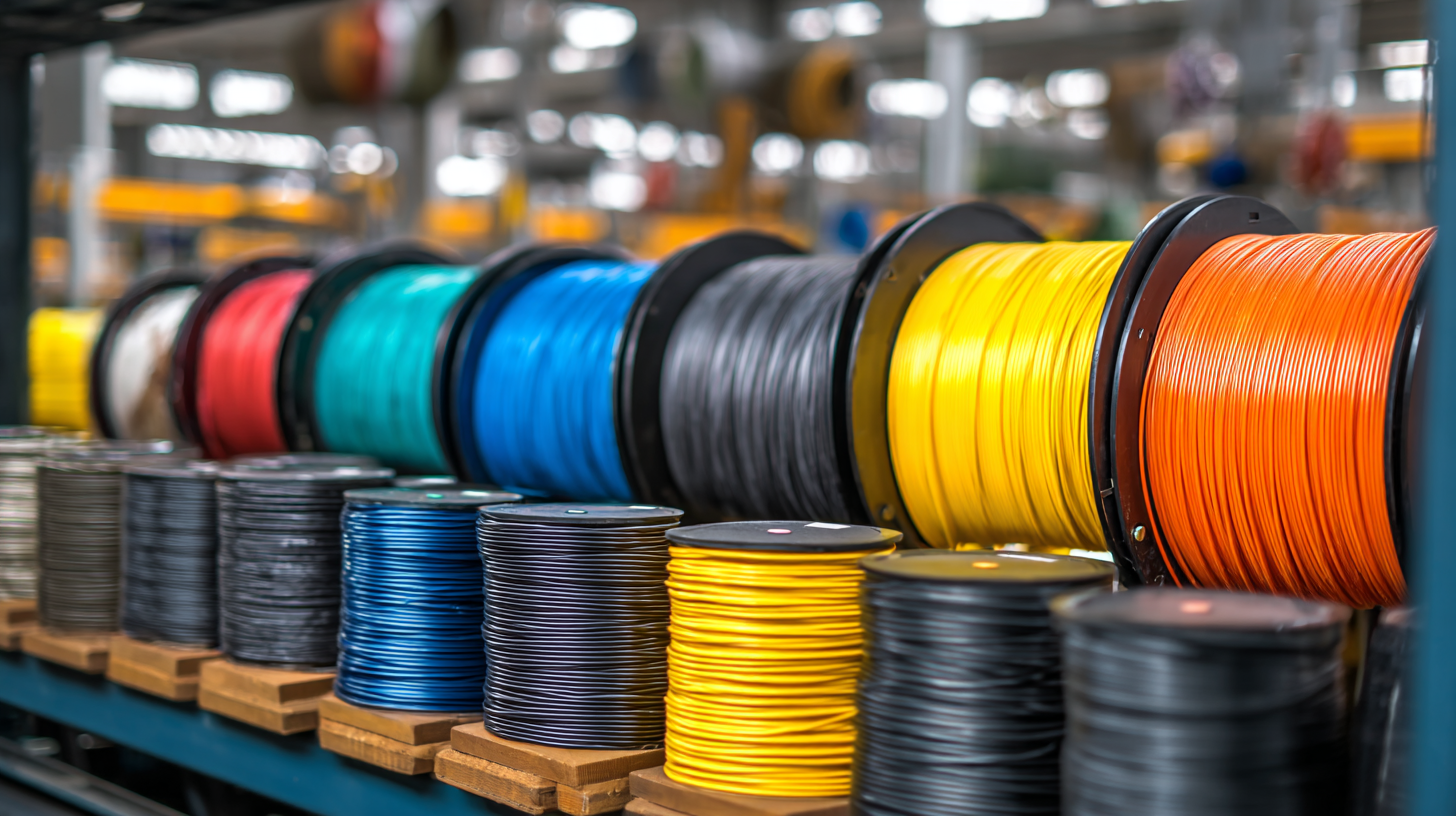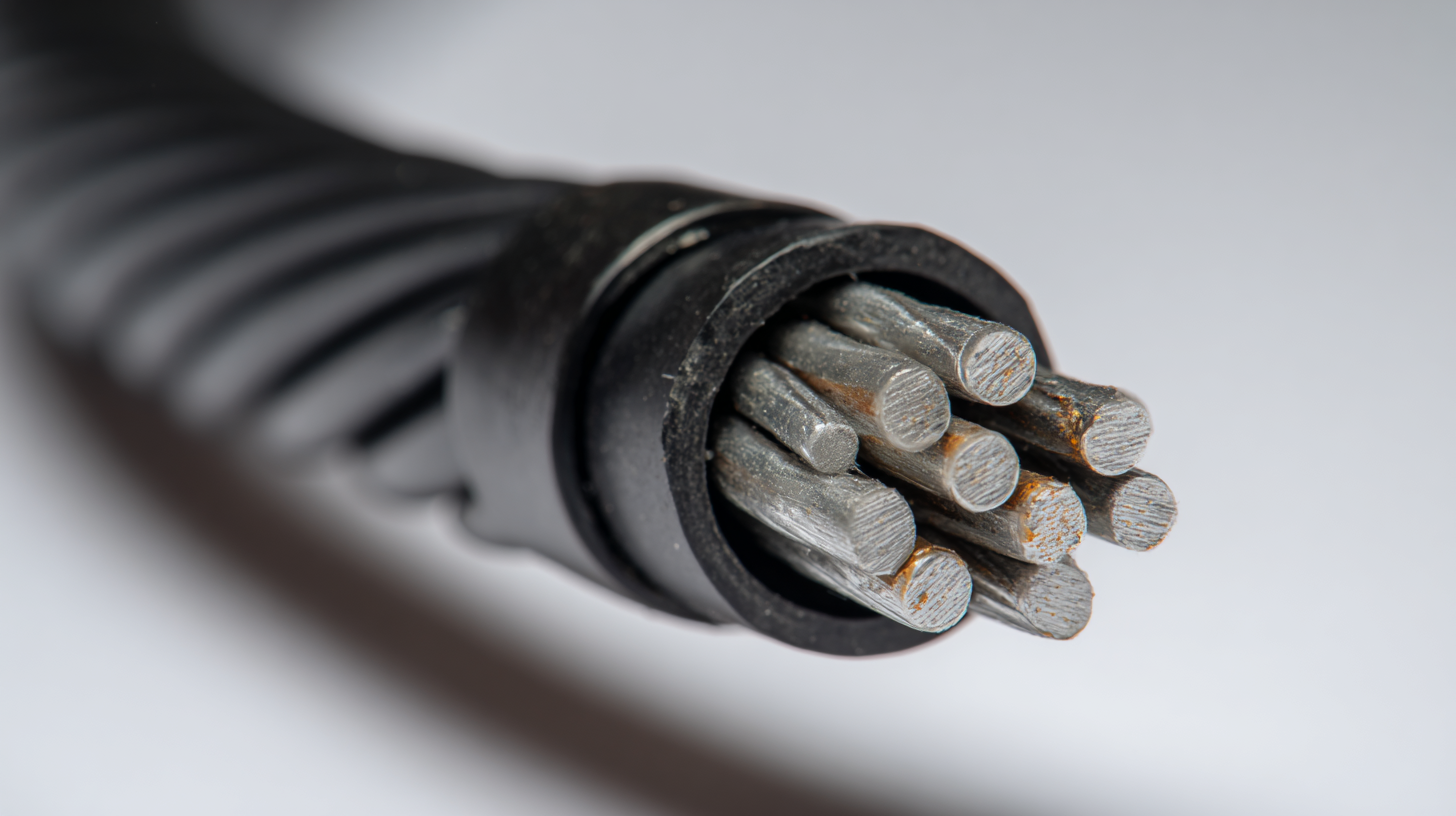Blog
Quality Tray Cables from China: Elevating Global Standards with Exceptional Manufacturing
In today's rapidly evolving industrial landscape, the demand for high-quality tray cables has soared, driven by the expanding sectors of renewable energy, automation, and complex infrastructure projects. According to a recent market analysis by Research and Markets, the global tray cable market is projected to grow at a CAGR of 5.8%, reaching USD 14.5 billion by 2025. This growth underscores the essential role of tray cables in ensuring efficient and safe power distribution across various applications. Additionally, China's manufacturing capabilities have positioned it as a key player in this sector, consistently meeting international quality standards. With state-of-the-art production techniques and rigorous quality control measures, Chinese manufacturers are not only enhancing the standards of tray cable production but are also setting benchmarks for sustainable practices in the industry. As the shift towards advanced manufacturing continues, the significance of exceptional products like tray cables becomes increasingly evident, reflecting a commitment to innovation and quality that resonates globally.

Quality Standards: What to Look for in Tray Cables from China
When selecting tray cables from China, adhering to high-quality standards is essential to ensure reliability and performance. First and foremost, look for cables that comply with international certifications such as UL, CE, and RoHS. These certifications indicate that the cables have undergone rigorous testing and meet established safety and environmental regulations. Additionally, manufacturers should adhere to industry-specific standards that suit your application, whether it’s for construction, manufacturing, or other specialized fields.
Another critical aspect is the materials used in the manufacturing of tray cables. Premium-grade conductors, such as copper or aluminum, should be employed to guarantee optimal electrical conductivity and thermal performance. Insulation and jacketing materials are equally important; they should provide maximum protection against mechanical damage and environmental factors. A manufacturer that utilizes advanced technologies and automated production lines often indicates a commitment to quality and consistency, resulting in a product that can withstand rigorous operational demands. By focusing on these quality standards, you can confidently choose tray cables that elevate your projects and ensure long-lasting performance.
Material Specifications: Understanding the Components that Impact Performance
When it comes to tray cables, understanding the material specifications is crucial for evaluating performance and longevity. High-quality tray cables typically consist of copper or aluminum conductors, with copper being the preferred choice due to its superior conductivity, reducing energy losses. According to the International Electrotechnical Commission (IEC), the efficiency of copper conductors can achieve up to 98%, significantly impacting the overall effectiveness of electrical installations.

Additionally, insulation materials like PVC, XLPE, or thermoplastic elastomers are vital in ensuring the cables can withstand environmental stressors. A report by the National Electrical Manufacturers Association (NEMA) highlights that cables with XLPE insulation can operate effectively in temperatures extending up to 90°C, making them ideal for demanding industrial applications.
Tip: When selecting tray cables, consider your specific environmental conditions and required electrical load. It's essential to ensure that the insulation type and conductor material align with your operational needs to enhance durability and performance. For optimal results, consulting industry standards and manufacturer specifications can help in making informed choices that elevate your system's reliability.
Manufacturing Processes: Key Steps in Producing High-Quality Tray Cables
The manufacturing processes involved in producing high-quality tray cables are crucial in ensuring their durability and performance. The first key step is the selection of raw materials. Manufacturers prioritize high-grade copper and aluminum conductors, as well as insulation materials that can withstand extreme temperatures and environmental conditions. This careful selection not only enhances conductivity but also plays a significant role in extending the lifespan of the cables.
Once the materials are sourced, the next step involves intricate wire drawing and stranding processes. This is where conductors are pulled to precise diameters and twisted together, condensing the wires into a robust assembly. Following this, insulation and jacketing processes utilize advanced extrusion techniques. Using state-of-the-art machinery, manufacturers apply layers of high-quality insulation to guard against moisture, chemicals, and physical damage, ensuring the cables meet international safety and performance standards. With these meticulous steps, Chinese manufacturers are raising the bar for tray cable production, establishing themselves as leaders in the global market.
Quality Tray Cables from China: Elevating Global Standards with Exceptional Manufacturing
| Dimension | Specification | Material Used | Manufacturing Process | Quality Standards |
|---|---|---|---|---|
| Conductor Size | 16 AWG to 250 AWG | Copper, Aluminum | Extrusion, Stranding | IEC 60502, UL 67 |
| Insulation Type | PVC, XLPE | Polyvinyl Chloride, Cross-linked Polyethylene | Molding, Finishing | ISO 9001 Certification |
| Voltage Rating | 600V to 1000V | Varied Conductive Materials | Cutting, Testing | RoHS Compliant |
| Fire Resistance | FT4, FT6 | Fire-retardant Materials | Testing for Flame Retardancy | ASTM E162 |
| Environmental Compliance | Outdoor Use | UV-resistant Materials | Environmental Testing Procedures | Green Building Standards |
Testing and Certification: Ensuring Reliability and Compliance of Tray Cables
In today’s global market, the importance of rigorous testing and certification for tray cables cannot be overstated. With the surge in demand for high-quality, reliable electrical components, manufacturers in China are stepping up their game by adhering to international standards. The comprehensive testing processes ensure that these tray cables not only meet but often exceed safety and performance expectations, making them a competitive choice for various applications across industries.
Certification plays a crucial role in establishing the trust and credibility of tray cables. By passing stringent tests, including those for temperature resistance, flexibility, and electrical conductivity, these cables are proven to be robust and reliable. This commitment to quality is essential for consumers and businesses alike, as it provides assurance that the products will perform adequately throughout their lifecycle. As companies continue to enhance their manufacturing practices, the global standards for tray cables are being elevated, ultimately benefiting users around the world. This meticulous approach to quality assurance is what sets these products apart in a crowded market.
Supplier Assessment: How to Choose the Right Manufacturer for Your Needs
 Choosing the right supplier is crucial for businesses, especially in industries like cable manufacturing. An effective supplier assessment process can significantly impact the quality of products and the overall efficiency of operations. This is where services like those offered by IMARC Group come into play, guiding companies through the intricate landscape of supplier selection. By evaluating potential partners based on a comprehensive understanding of their manufacturing capabilities, quality control measures, and compliance with global standards, businesses can ensure that they are not only sourcing high-quality tray cables but also fostering sustainable supply chains.
Choosing the right supplier is crucial for businesses, especially in industries like cable manufacturing. An effective supplier assessment process can significantly impact the quality of products and the overall efficiency of operations. This is where services like those offered by IMARC Group come into play, guiding companies through the intricate landscape of supplier selection. By evaluating potential partners based on a comprehensive understanding of their manufacturing capabilities, quality control measures, and compliance with global standards, businesses can ensure that they are not only sourcing high-quality tray cables but also fostering sustainable supply chains.
One innovative approach to enhancing supplier selection is through digital twins and fuzzy frameworks. These technologies allow companies to model various scenarios and assess potential risks in real-time, providing a proactive way to manage supply chain sustainability. This method has proven effective in industries such as gas production in Egypt, where evaluating suppliers based on detailed risk assessments ensures that the chosen partner aligns with the company's long-term goals while minimizing potential disruptions. By integrating these advanced tools into their supplier evaluation strategies, businesses can effectively elevate their standards and secure partnerships that drive success in the global market.
Exclusive Access
Unlimited Resources
Detailed information on our products to assist you with the planning of your cable management project
Register Now